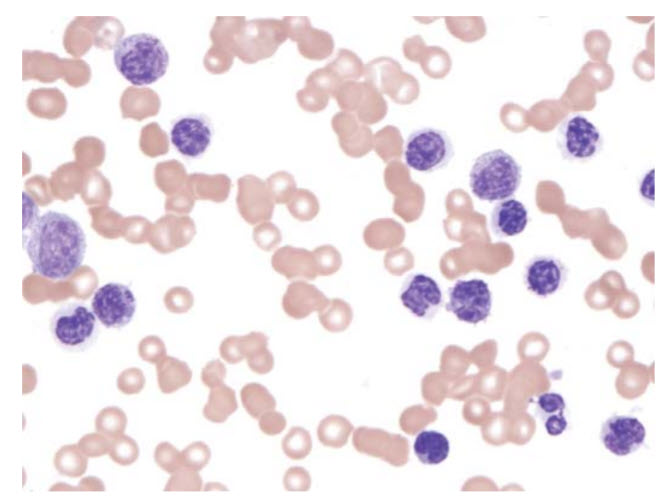Question 4#
A 69-year-old woman presents with a 2-month history of worsening lower back pain, confusion, mild abdominal pain, weight loss, and constipation. She takes hydrochlorothiazide for hypertension and simvastatin for hypercholesterolemia. Her routine preventative screening measures were all up to date and within normal limits at her previous visit 5 months ago. Physical examination is unremarkable and fecal occult blood test is negative. Laboratory results and a peripheral blood smear (Figure below) are shown below.
- Leukocyte count 9,000/mm3
- Hemoglobin 9.1 g/dL
- Platelets 290,000/mm3
- Blood urea nitrogen 32 mg/dL
- Creatinine 2.1 mg/dL
- Erythrocyte sedimentation rate 68 mm/h
- Amylase 67 U/L

Which of the following additional findings do you expect with this patient’s condition?
A. Mechanical obstructionB. Electrolyte abnormality
C. Hormone level abnormality
D. Arterial blood gas abnormality
Correct Answer is B
Comment:
Electrolyte abnormality. The patient in this question is presenting with anemia, low back pain, increased erythrocyte sedimentation rate (ESR), and renal dysfunction, suggesting the diagnosis of multiple myeloma. The peripheral smear shows the rouleaux formation (stacked appearance of RBCs), which may also be seen in this condition. In addition, the patient is presenting with constipation and confusion, both symptoms of hypercalcemia (>10.2 mg/dL), which is seen in about one-third of patients with multiple myeloma (however, this patient is also on a thiazide diuretic which may be worsening the hypercalcemia). The etiology of hypercalcemia in multiple myeloma is bone lysis from humoral factors released by the plasma cells. (A) Mechanical obstruction secondary to malignancy also can cause constipation, but the patient’s signs and symptoms do not lend credence to colon cancer. (C, D) Hormone level and arterial blood gas abnormalities are typically not seen in multiple myeloma and are not associated with constipation.